» posted on Saturday, January 19th, 2013 by Linda Lou Burton
Standing On The Promises
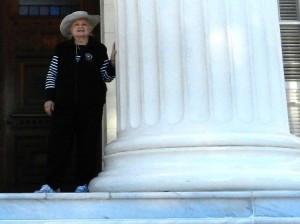 Linda Burton posting from Montgomery, Alabama – I stood on the star today. That’s the star the Sophie Bibb Chapter of the Daughters of the Confederacy placed on the spot where Jefferson Davis (1808-1889) stood when he was inaugurated President of the Confederate States of America on February 18, 1861. With one hand on the majestic white columns of the Alabama state capitol, I gazed down the marble steps it took me a while to climb; I looked further down the slope that’s still affectionately known as Goat Hill, because it once was pastureland for Andrew Dexter’s goats; I scanned the blocks on the street we know today as Dexter Avenue. Stand on that spot and you are standing in the pages of a history book. A block away the steeple rises above the modest red-brick church where Martin Luther King Jr (1929-1968) was pastor from 1954 to 1960. It’s now known as the
Linda Burton posting from Montgomery, Alabama – I stood on the star today. That’s the star the Sophie Bibb Chapter of the Daughters of the Confederacy placed on the spot where Jefferson Davis (1808-1889) stood when he was inaugurated President of the Confederate States of America on February 18, 1861. With one hand on the majestic white columns of the Alabama state capitol, I gazed down the marble steps it took me a while to climb; I looked further down the slope that’s still affectionately known as Goat Hill, because it once was pastureland for Andrew Dexter’s goats; I scanned the blocks on the street we know today as Dexter Avenue. Stand on that spot and you are standing in the pages of a history book. A block away the steeple rises above the modest red-brick church where Martin Luther King Jr (1929-1968) was pastor from 1954 to 1960. It’s now known as the 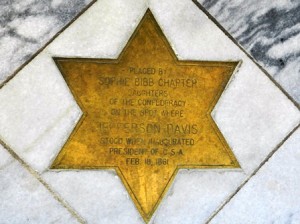 Dexter Avenue King Memorial Baptist Church; the Montgomery bus boycott was organized here December 2, 1955. A few blocks more down Dexter Avenue is the Court Square Fountain, where Rosa Parks (1913-2005) boarded a city bus and refused to give up her seat to a white man, an act of civil disobedience at the time; a history-making choice. I’m in a history book all right, but civil war and civil rights are not the whole of it. There’s more.
Dexter Avenue King Memorial Baptist Church; the Montgomery bus boycott was organized here December 2, 1955. A few blocks more down Dexter Avenue is the Court Square Fountain, where Rosa Parks (1913-2005) boarded a city bus and refused to give up her seat to a white man, an act of civil disobedience at the time; a history-making choice. I’m in a history book all right, but civil war and civil rights are not the whole of it. There’s more.
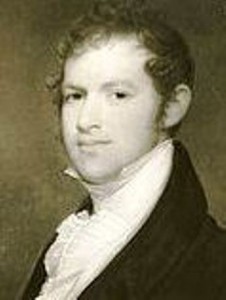 I could go all the way back to October 1540 when Hernando de Soto staked a Spanish flag on the banks of the Alabama River here, claiming the land for Spain; but let’s move far ahead to 1819, the year Alabama became a state, and Montgomery became a city. Andrew Dexter had dreams of Montgomery becoming the capital someday and set aside some land on a hilltop for a capitol building. Yes, that’s where his goats grazed. As the economy of the state prospered, the decision eventually was made to move the capital to Montgomery; today Dexter Avenue bisects the center of downtown and terminates at the capitol.
I could go all the way back to October 1540 when Hernando de Soto staked a Spanish flag on the banks of the Alabama River here, claiming the land for Spain; but let’s move far ahead to 1819, the year Alabama became a state, and Montgomery became a city. Andrew Dexter had dreams of Montgomery becoming the capital someday and set aside some land on a hilltop for a capitol building. Yes, that’s where his goats grazed. As the economy of the state prospered, the decision eventually was made to move the capital to Montgomery; today Dexter Avenue bisects the center of downtown and terminates at the capitol.
 Montgomery, today a city of 205,764 (2010 US Census), became Alabama’s capital city in January 1846; the first capitol was built on Andrew Dexter’s hill, but burned after only two years. The capitol that stands there today was completed in 1851, although additional wings have been added since. Alabama seceded from the Union January 11, 1861, following South Carolina, Mississippi, and Florida. By the time Jefferson Davis stood on those capitol steps as President of the CSA, Georgia, Louisiana and Texas also had seceded. Four of the eleven southern states that left the Union – Virginia, Arkansas, North Carolina, and Tennessee – did not secede until after the Battle of Fort Sumter that occurred on April 12, 1861; the order to fire that first shot was sent by telegram from Montgomery the day before; the telegraph office was located in the Winter Building on Dexter Avenue.
Montgomery, today a city of 205,764 (2010 US Census), became Alabama’s capital city in January 1846; the first capitol was built on Andrew Dexter’s hill, but burned after only two years. The capitol that stands there today was completed in 1851, although additional wings have been added since. Alabama seceded from the Union January 11, 1861, following South Carolina, Mississippi, and Florida. By the time Jefferson Davis stood on those capitol steps as President of the CSA, Georgia, Louisiana and Texas also had seceded. Four of the eleven southern states that left the Union – Virginia, Arkansas, North Carolina, and Tennessee – did not secede until after the Battle of Fort Sumter that occurred on April 12, 1861; the order to fire that first shot was sent by telegram from Montgomery the day before; the telegraph office was located in the Winter Building on Dexter Avenue.
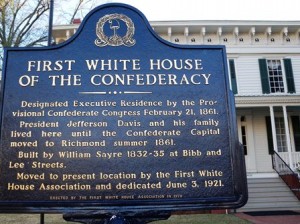 The First White House of the Confederacy sits opposite the west side of the capitol now, although it was at the corner of Bibb and Lee Streets when Jefferson Davis and his family lived there. Their residency was short; after Virginia joined the Confederacy, Davis moved his government to Richmond in May 1861 to be closer to the primary areas of battle. Montgomery was virtually untouched by conflict during the war. It was April 12, 1865 when Major General J H Wilson captured Montgomery for the Union and raised the US flag over the Alabama capitol once again, three days after General Robert E Lee’s surrender at Appomattox.
The First White House of the Confederacy sits opposite the west side of the capitol now, although it was at the corner of Bibb and Lee Streets when Jefferson Davis and his family lived there. Their residency was short; after Virginia joined the Confederacy, Davis moved his government to Richmond in May 1861 to be closer to the primary areas of battle. Montgomery was virtually untouched by conflict during the war. It was April 12, 1865 when Major General J H Wilson captured Montgomery for the Union and raised the US flag over the Alabama capitol once again, three days after General Robert E Lee’s surrender at Appomattox.
Fast forward. It’s 1955 and Montgomery is a racially segregated city. In 1900 Montgomery passed a city ordinance (essentially only whites could vote) to segregate bus passengers by race. The first four rows of seats were reserved for whites; sections for black people were in  the rear of the bus, although blacks comprised more than 75% of the ridership. The sections were not fixed but were determined by the conductor’s placement of a movable sign. If more whites needed seats, blacks were instructed to move to the rear, stand, or leave the bus.
the rear of the bus, although blacks comprised more than 75% of the ridership. The sections were not fixed but were determined by the conductor’s placement of a movable sign. If more whites needed seats, blacks were instructed to move to the rear, stand, or leave the bus.
Rosa Parks boarded the bus near Court Square Fountain on Dexter Avenue around 6 PM on a Thursday, December 1, 1955, after her day of work as a seamstress at a downtown department store. She paid her fare and sat in an empty seat in the first row of the Colored section. As the bus traveled its route, the whites-only seats filled; at the third stop several white passengers entered and the driver ordered her out of her seat. She moved, but only towards the window. Driver James Blake told her she would be arrested if she didn’t move further back in the bus. She refused.
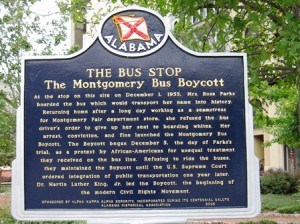 A single moment can transform the world. Her arrest and subsequent trial galvanized blacks in the city. On Sunday, December 4, 1955, plans for the Montgomery Bus Boycott were announced at black churches in the area, and a front-page article in The Montgomery Advertiser helped spread the word. Martin Luther King Jr was a young and mostly unknown minister at Dexter Avenue Baptist Church at the time; he was selected to lead the Montgomery Improvement Association. The black community persevered in their boycott for 381 days, riding in carpools, traveling in black-operated cabs, or walking, some as far as 20 miles. Public buses stood idle, severely damaging the transit company’s finances; the city finally repealed its law requiring segregation on public buses. Rosa Parks’ defiant stand and the ensuing Montgomery Bus Boycott gave impetus to the Civil Rights Movement.
A single moment can transform the world. Her arrest and subsequent trial galvanized blacks in the city. On Sunday, December 4, 1955, plans for the Montgomery Bus Boycott were announced at black churches in the area, and a front-page article in The Montgomery Advertiser helped spread the word. Martin Luther King Jr was a young and mostly unknown minister at Dexter Avenue Baptist Church at the time; he was selected to lead the Montgomery Improvement Association. The black community persevered in their boycott for 381 days, riding in carpools, traveling in black-operated cabs, or walking, some as far as 20 miles. Public buses stood idle, severely damaging the transit company’s finances; the city finally repealed its law requiring segregation on public buses. Rosa Parks’ defiant stand and the ensuing Montgomery Bus Boycott gave impetus to the Civil Rights Movement.
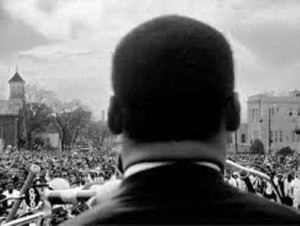 Martin Luther King Jr continued as pastor of Dexter Avenue Baptist Church until 1960, emerging as the leader of the Civil Rights Movement. In March 1965 he organized and led a march of over 20,000 people from Selma, Alabama to the capitol in Montgomery, leading the protestors up Dexter Avenue. At the conclusion of the march he stood on the steps of the state capitol, delivering a speech that became known as “How Long, Not Long.”
Martin Luther King Jr continued as pastor of Dexter Avenue Baptist Church until 1960, emerging as the leader of the Civil Rights Movement. In March 1965 he organized and led a march of over 20,000 people from Selma, Alabama to the capitol in Montgomery, leading the protestors up Dexter Avenue. At the conclusion of the march he stood on the steps of the state capitol, delivering a speech that became known as “How Long, Not Long.”
Yes, I stood in the pages of a history book today, where so many have sought to change the status quo. De Soto’s claim for Spain never materialized; Andrew Dexter got his capitol on the hill; the CSA failed; the Civil Rights Movement led to a societal shift. Sometimes things worked out; sometimes they didn’t, but you have to applaud the guts it took to try. Think of the city planners that daringly installed the electric streetcar system in 1886; Montgomery 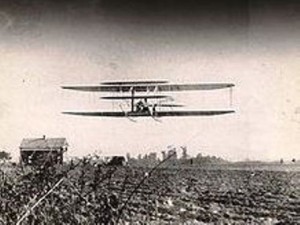 was the first city in the United States to move from the trusted horse and buggy mode. Turn the corner from Dexter Avenue onto Commerce Street there at Court Square Fountain, you’ll see Union Station. That’s where Wilbur and Orville Wright’s bi-plane arrived in 1910. You see, Wilbur and Orville established the country’s first civilian school for powered aviation in Montgomery. How many people were saying nobody would ever want to fly?
was the first city in the United States to move from the trusted horse and buggy mode. Turn the corner from Dexter Avenue onto Commerce Street there at Court Square Fountain, you’ll see Union Station. That’s where Wilbur and Orville Wright’s bi-plane arrived in 1910. You see, Wilbur and Orville established the country’s first civilian school for powered aviation in Montgomery. How many people were saying nobody would ever want to fly?
About Montgomery’s Historical Sites www.visitmontgomery.com
- Alabama Department of Archives and History
- Alabama State Capitol
- Alabama’s Confederate Prison
- Civil Rights Memorial
- Civil Rights Memorial Center
- Confederate Memorial
- Confederate Post Office
- Dexter Avenue King Memorial Baptist Church
- Dexter Avenue Parsonage
- First White House of the Confederacy
- Freedom Rides Museum
- Historic Union Station
- National Center for the Study of Civil Rights
- Oakwood Cemetery
- Rosa Parks Library and Museum
- Winter Building
